Gardening in Woodlands
Introduction to Woodland Gardening
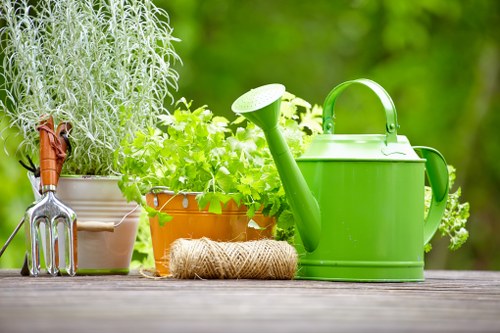
Gardening in woodlands offers a unique and rewarding experience for both novice and seasoned gardeners. The serene environment, coupled with the rich biodiversity, creates a perfect backdrop for cultivating a diverse range of plants. Unlike traditional gardens, woodland gardens thrive in shaded areas, making the most of the natural canopy provided by trees.
One of the primary benefits of woodland gardening is the ability to harness the natural ecosystem. By working with existing flora and fauna, gardeners can create sustainable landscapes that require minimal maintenance. Additionally, woodland gardens often serve as habitats for various wildlife, promoting ecological balance.
However, gardening in woodlands also presents its own set of challenges. Limited sunlight, competition for nutrients, and maintaining soil health are some of the common issues gardeners may face. Understanding these challenges and implementing effective strategies is key to a successful woodland garden.
Choosing the Right Plants
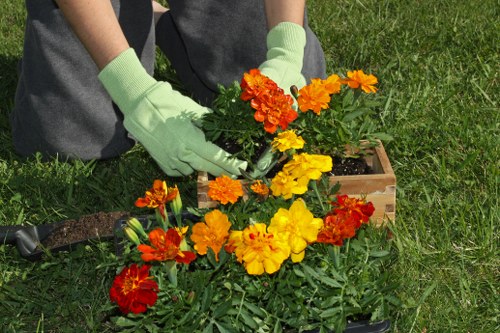
Selecting the appropriate plants is crucial when setting up a woodland garden. Shade-tolerant species are essential to thrive under the canopy. Native plants are often the best choice as they are adapted to the local climate and soil conditions, reducing the need for extensive maintenance.
Some popular choices for woodland gardens include hostas, ferns, and woodland wildflowers. These plants not only add aesthetic value but also support local biodiversity. Incorporating a mix of evergreen and decidaceous plants ensures year-round interest in the garden.
It is also beneficial to include a variety of plant heights and textures. This layering effect creates depth and visual appeal, mimicking the natural woodland environment. Additionally, flowering plants can attract pollinators, further enhancing the garden's ecosystem.
Soil Preparation and Maintenance
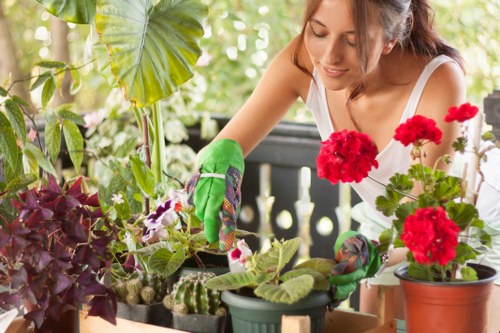
Soil health is paramount in woodland gardening. The soil typically found in woodlands is rich in organic matter, but it may be acidic and low in certain nutrients. Conducting a soil test can help determine the specific amendments needed to create an optimal growing environment.
Amending the soil with compost or well-rotted manure can improve its structure and fertility. Adding lime can help neutralize acidity, creating a more balanced pH level. Mulching is also vital in woodland gardens as it helps retain moisture, suppress weeds, and gradually enrich the soil as it decomposes.
Regular maintenance, including periodic fertilization and soil aeration, ensures that plants receive the necessary nutrients and can grow healthily. Additionally, controlling invasive species is essential to prevent them from outcompeting native plants.
Water Management in Woodland Gardens
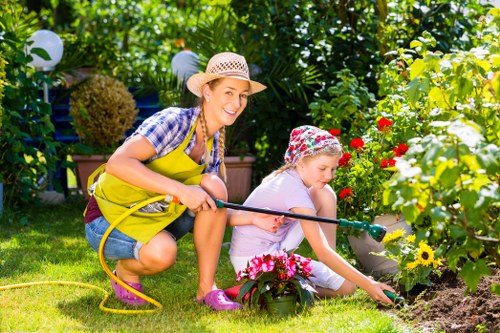
Effective water management is crucial, especially in shaded woodland areas where moisture levels can vary. Installing a drip irrigation system can provide consistent watering without over-saturating the soil. Alternatively, using soaker hoses allows water to seep slowly, minimizing evaporation and runoff.
Rainwater harvesting is another sustainable practice that can be incorporated into woodland gardens. Collecting and storing rainwater not only conserves water but also ensures that plants receive natural, chemical-free hydration. Additionally, incorporating water features like small ponds or birdbaths can enhance the garden's beauty and provide habitats for wildlife.
Proper drainage is equally important to prevent waterlogging, which can lead to root rot and other plant diseases. Ensuring that the garden has well-draining soil and appropriate drainage systems can mitigate these issues.
Design Principles for Woodland Gardens
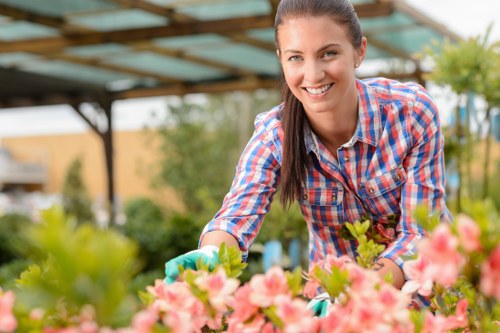
Designing a woodland garden involves harmonizing with the natural landscape while adding personal touches. Emphasizing natural shapes and forms creates a seamless transition between the garden and the surrounding forest. Using curved pathways, natural stone borders, and organic planting arrangements enhances the garden's aesthetic appeal.
Incorporating focal points such as sculptures, benches, or water features can draw the eye and provide areas for relaxation. Additionally, creating layers with varying plant heights adds depth and visual interest, making the garden feel more dynamic and inviting.
Lighting is another important aspect of woodland garden design. Soft, ambient lighting can highlight key features and ensure that the garden can be enjoyed even after dusk. Solar-powered lights are an eco-friendly option that aligns with the sustainability goals of woodland gardening.
Wildlife and Biodiversity
Woodland gardens are ideal for supporting diverse wildlife. By planting native plants and providing habitats such as birdhouses, insect hotels, and small water bodies, gardeners can encourage a variety of species to visit and inhabit the garden.
Beneficial insects like bees and butterflies play a crucial role in pollination, enhancing plant health and productivity. Additionally, attracting birds and small mammals can aid in pest control, creating a balanced ecosystem.
Promoting biodiversity not only benefits the garden but also contributes to the larger environmental health of the area. It fosters a resilient ecosystem capable of withstanding pests, diseases, and changing climatic conditions.
Local Relevance: Nearby Areas to Woodlands
Gardening in Woodlands is complemented by the vibrant communities surrounding it. Here are some of the closest areas to Woodlands that offer unique features relevant to gardening services:
- Cedars Park: Located just 5 miles from Woodlands, Cedars Park is known for its extensive nurseries and garden centers, providing a wide variety of plants and gardening supplies.
- Elmwood: A scenic area 7 miles away, Elmwood boasts beautiful hiking trails and community gardens where enthusiasts can exchange tips and plants.
- Pinehurst: Only 10 miles from Woodlands, Pinehurst is famous for its botanical gardens and annual flower festivals, attracting gardeners from all around.
- Maple Ridge: Situated 12 miles from Woodlands, Maple Ridge offers specialized gardening workshops and seminars focused on sustainable practices.
- Silver Lake: A serene location 8 miles away, Silver Lake is ideal for water gardening and offers expert advice on maintaining aquatic plants.
- Oakdale: 6 miles from Woodlands, Oakdale features a variety of ornamental plants and hosts a monthly plant exchange event.
- Birchwood: Located 9 miles away, Birchwood provides access to organic gardening resources and eco-friendly fertilizers.
- Willowbrook: 11 miles from Woodlands, Willowbrook is known for its community-supported agriculture programs and local farmer's markets.
- Hickory Hills: A short 4-mile drive, Hickory Hills specializes in native plants and offers landscaping services tailored to woodland environments.
- Cypress Grove: 13 miles away, Cypress Grove provides educational tours and hands-on gardening classes for all ages.
- Juniper Junction: 14 miles from Woodlands, Juniper Junction is a hub for rare and exotic plant enthusiasts, offering specialized gardening tools and knowledge.
- Magnolia Meadows: 15 miles away, Magnolia Meadows is celebrated for its vibrant floral displays and annual gardening competitions.
- Walnut Valley: Located 16 miles from Woodlands, Walnut Valley offers comprehensive gardening consultations and personalized garden planning services.
Whether you’re seeking high-quality gardening supplies, expert advice, or a supportive gardening community, these nearby areas provide valuable resources to enhance your woodland gardening experience.
Seasonal Gardening Tips

Understanding the seasonal changes is essential for maintaining a thriving woodland garden. Each season presents its own set of tasks and opportunities for garden enhancement.
Spring: Begin by clearing fallen leaves and debris. Planting hardy perennials and preparing beds with compost can set the stage for a vibrant growing season.
Summer: Focus on maintaining moisture levels and protecting plants from excessive heat. Regular weeding and mulching help keep the garden healthy and productive.
Autumn:
Harvesting late-season vegetables and planting bulbs for spring can ensure continued growth. Raking leaves and adding them to compost enriches the soil for the next year.
Winter:
Pruning trees and shrubs, insulating tender plants, and planning for the upcoming gardening season are key activities during winter months.
Each season requires specific care to ensure that your woodland garden remains lush and resilient throughout the year.
Tools and Equipment for Woodland Gardening

Equipping yourself with the right tools can significantly enhance your woodland gardening experience. Essential tools include a sturdy trowel for planting, a pruning shears for trimming, and a watering can or drip irrigation system for consistent moisture.
Other useful equipment includes a wheelbarrow for transporting soil and plants, a garden fork for aerating the soil, and a mulching mower to maintain ground cover. Investing in quality tools ensures durability and efficiency, making gardening tasks easier and more enjoyable.
Additionally, protective gear such as gloves, hats, and knee pads can provide comfort and safety while working in the garden. Organizing your tools in a dedicated shed or storage area keeps them accessible and in good condition.
Eco-Friendly Practices in Woodland Gardening

Adopting eco-friendly practices not only benefits the environment but also enhances the sustainability of your woodland garden. Utilizing organic fertilizers and pesticides reduces chemical runoff and promotes healthy plant growth.
Composting kitchen scraps and garden waste creates a valuable source of nutrients for your plants, minimizing the need for synthetic amendments. Additionally, practicing crop rotation and companion planting can naturally deter pests and improve soil fertility.
Implementing water conservation techniques, such as rainwater harvesting and efficient irrigation systems, ensures that your garden remains hydrated without overusing this precious resource.
Community and Resources
Connecting with the local gardening community can provide invaluable support and inspiration. Joining gardening clubs, attending workshops, and participating in community events foster a sense of camaraderie and shared knowledge.
Online forums and social media groups dedicated to woodland gardening offer platforms for exchanging ideas, troubleshooting challenges, and showcasing your garden's progress. Additionally, local nurseries and botanical gardens often host educational sessions and provide access to expert advice.
Leveraging these resources can enhance your gardening skills and keep you updated on the latest trends and techniques in woodland gardening.
Conclusion
Gardening in woodlands is a fulfilling endeavor that harmonizes with nature and promotes ecological balance. By selecting the right plants, maintaining soil health, managing water effectively, and adopting sustainable practices, you can create a beautiful and resilient woodland garden.
Embracing the unique challenges and opportunities presented by woodland environments allows gardeners to develop innovative solutions and cultivate thriving landscapes. Whether you're enhancing your own property or contributing to the broader ecosystem, woodland gardening offers endless possibilities for growth and creativity.
Contact us today to start your woodland gardening journey and transform your outdoor space into a lush, vibrant sanctuary.
